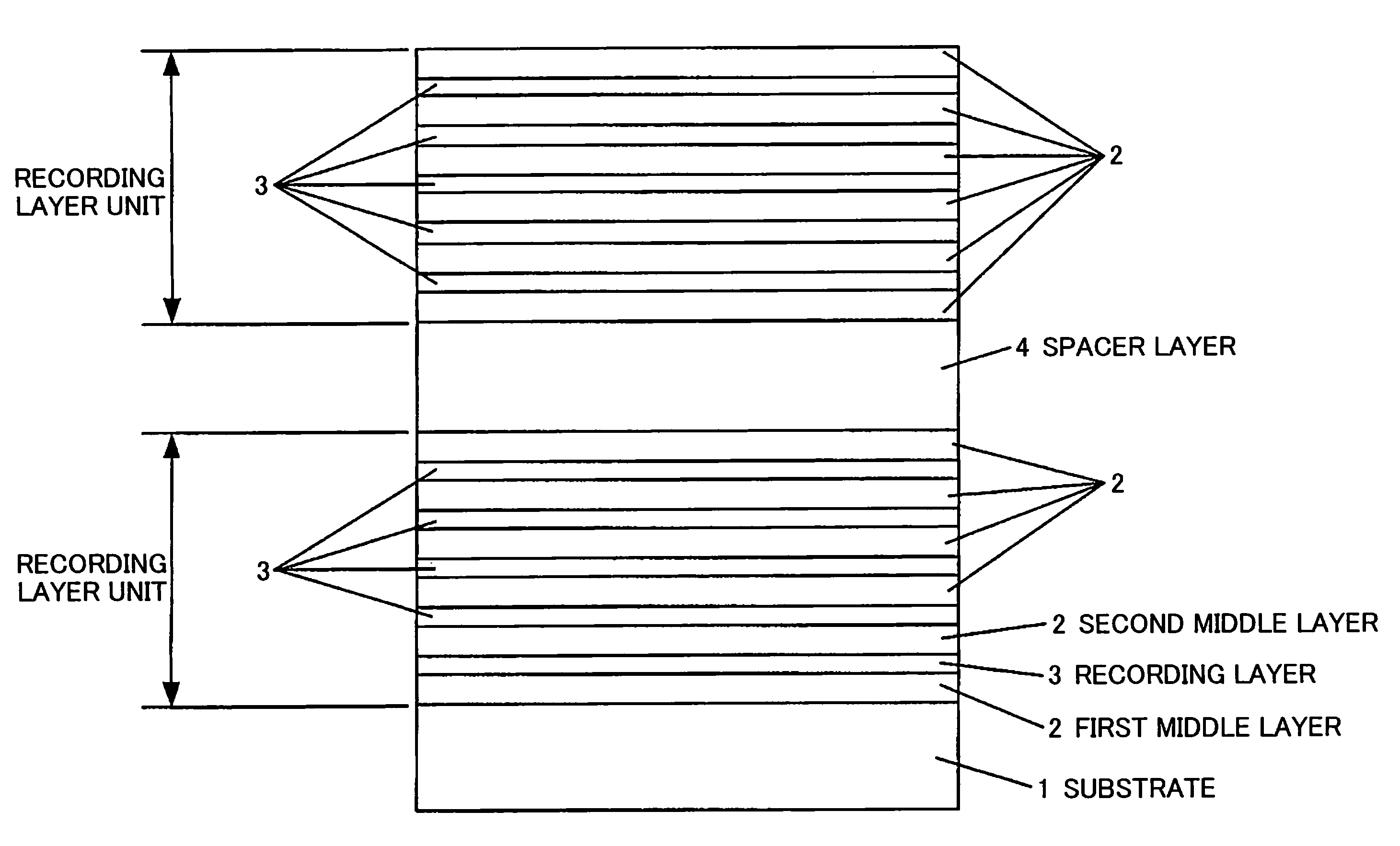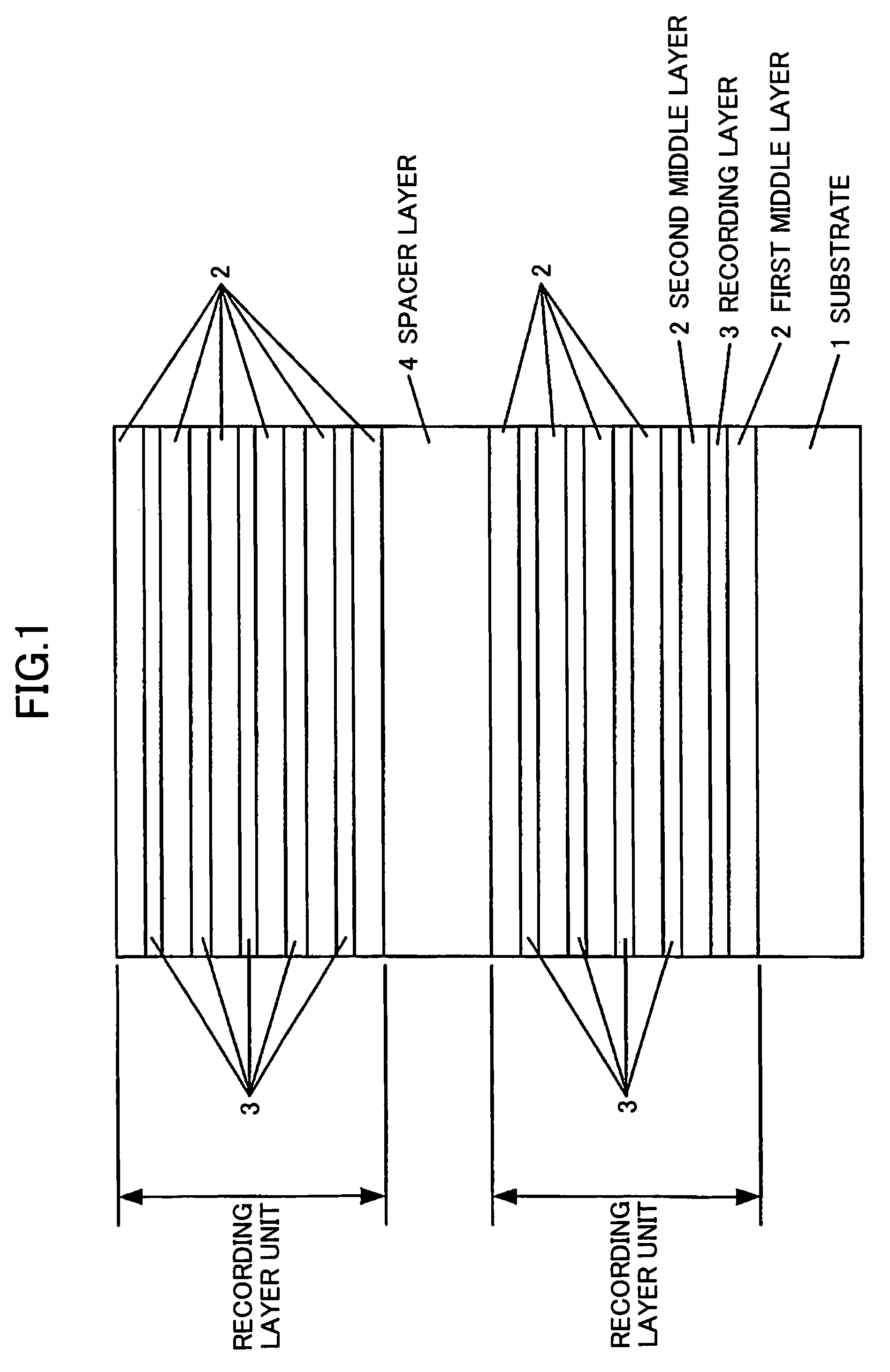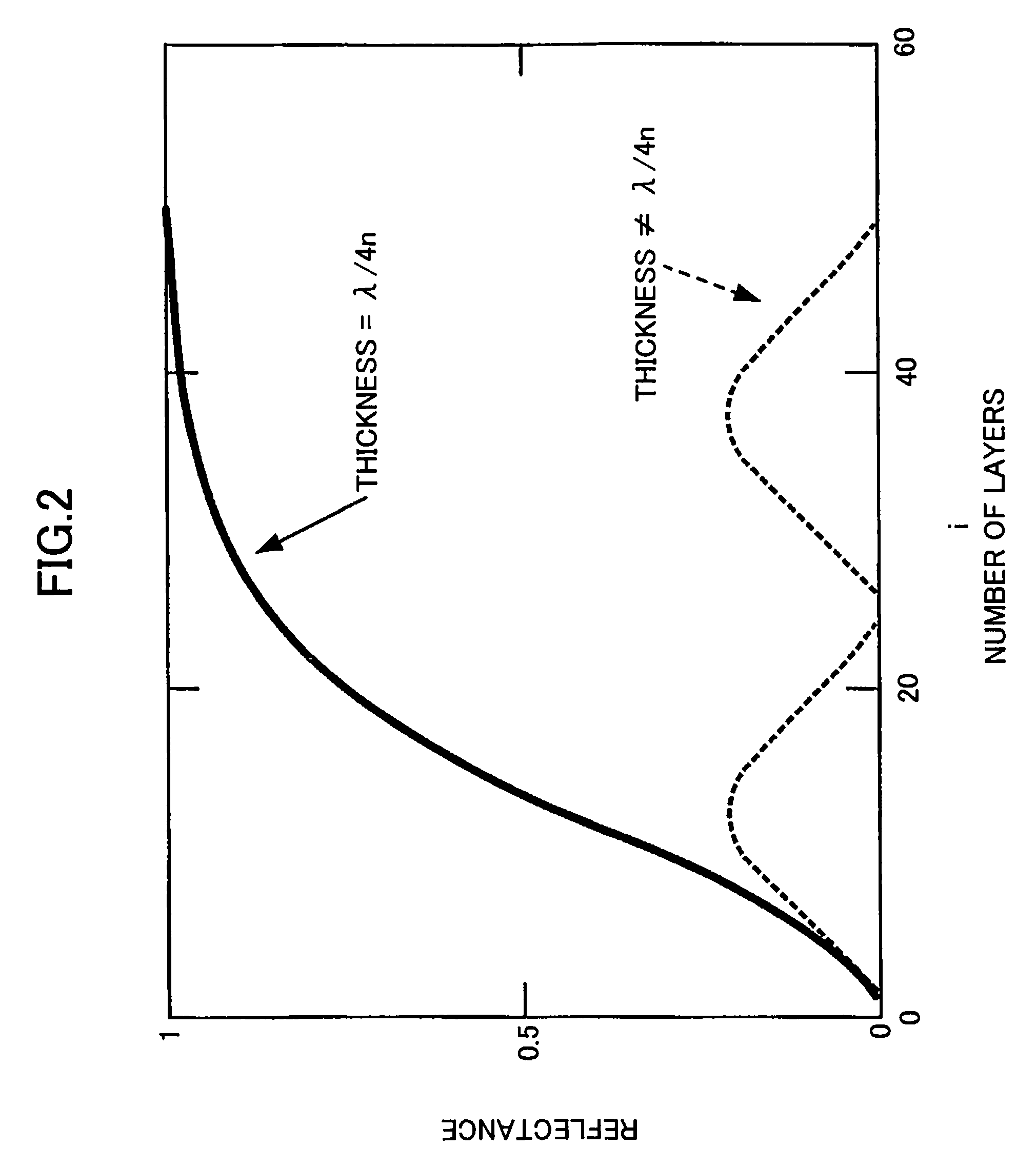Multilayer optical information recording medium, optical head, and optical drive
a multi-layer optical information and recording medium technology, applied in the field of multi-layer optical information recording mediums, optical heads, optical drives, can solve the problems of difficult to accurately position laser beams, increase noise, and decrease in s/n ratio, so as to accurately record, reproduce, and/or delete information, accurate detection of signals
- Summary
- Abstract
- Description
- Claims
- Application Information
AI Technical Summary
Benefits of technology
Problems solved by technology
Method used
Image
Examples
third embodiment
[0091]In the third embodiment, a recording layer unit is made up of five recording layers 3 and six middle layers 2, and one control layer 5 is provided for each recording layer unit. However, the present invention is not limited to this configuration. As a value obtained by a formula [(thickness of recording layer 3)×number of layers+(thickness of middle layer 2)×number of layers] increases, the distance between the control layer 5 and the most distant recording layer 3 increases. In a tracking method that uses light beams from two light sources, a large distance between the control layer 5 and the recording layer 3 results in a low accuracy in positioning a light spot of a recording light beam. For this reason, the number of layers in a recording layer unit is preferably no more than 100.
[0092]In this embodiment, as shown in FIG. 5, grooves are formed on a surface of the control layer 5, which surface is closer to the substrate 1, to detect a tracking error using a push-pull metho...
eleventh embodiment
[0101]FIG. 13 is a drawing illustrating the configuration of an exemplary signal recording / reproducing apparatus according to the present invention for recording and reproducing a signal on a multilayer optical information recording medium according to an embodiment of the present invention. In this embodiment, the third exemplary multilayer optical information recording medium shown in FIG. 5 is used as an exemplary optical recording medium to describe exemplary signal recording and reproduction processes by the exemplary signal recording / reproducing apparatus.
[0102]The eleventh embodiment of the present invention is described below with reference to FIG. 13. In the exemplary signal recording / reproducing apparatus shown in FIG. 13, a light beam emitted from a light source 11 (first light source) passes through a lens 12, a polarization beam splitter 13, a dichroic prism 14, a ¼ wavelength plate 15, and an objective lens 16; and is thereby focused on a track on the control layer 5 i...
PUM
| Property | Measurement | Unit |
|---|---|---|
| wavelength | aaaaa | aaaaa |
| wavelength | aaaaa | aaaaa |
| wavelength | aaaaa | aaaaa |
Abstract
Description
Claims
Application Information
 Login to View More
Login to View More - R&D
- Intellectual Property
- Life Sciences
- Materials
- Tech Scout
- Unparalleled Data Quality
- Higher Quality Content
- 60% Fewer Hallucinations
Browse by: Latest US Patents, China's latest patents, Technical Efficacy Thesaurus, Application Domain, Technology Topic, Popular Technical Reports.
© 2025 PatSnap. All rights reserved.Legal|Privacy policy|Modern Slavery Act Transparency Statement|Sitemap|About US| Contact US: help@patsnap.com



